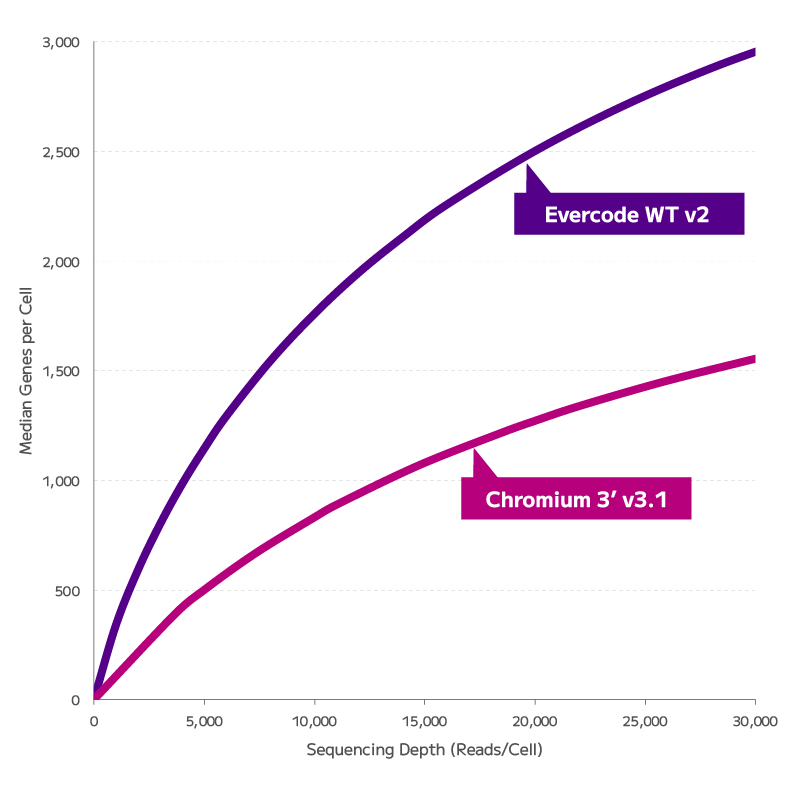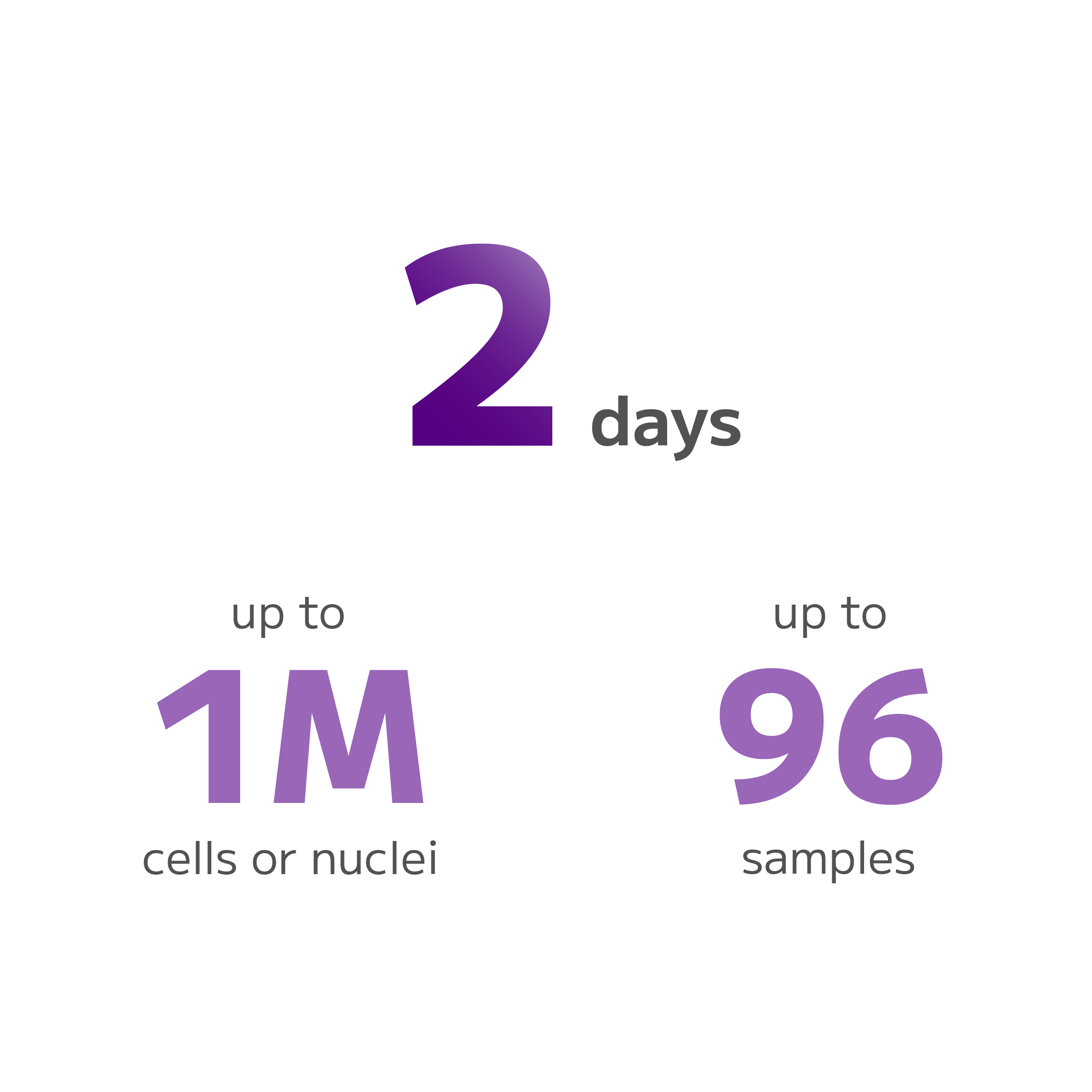Cells
Samples
Run up to 1 million cells and 96 biological samples or conditions in a single experiment. Scale exponentially with Evercode combinatorial barcoding.
See example datasetsCells
Samples
Evercode™ split-pool combinatorial barcoding is a simple, instrument-free solution to single cell sequencing. This easily adopted approach brings unprecedented sensitivity, scalability, and flexibility to any lab.
Evercode's combinatorial barcoding enables you to dramatically scale up the cells and samples per experiment.
If you have a centrifuge, thermal cycler, and some pipettes, you’re ready to go.
Better detect lowly expressed genes and avoid ambient RNA common in droplet-based single cell sequencing.
Fix and store samples as they come in for up to 6 months and then run together later on your schedule. Ideal for time-courses and cross-site collaborations.

Compared with the leading droplet-based technologies, Evercode™ requires far fewer experiments.
Fix cells or nuclei as they're available to lock in the biology. After a 1‐hour fixation, samples are stable for 6 months. Whether working on a timecourse study, sharing samples between laboratories, or segregating sample preparation from core lab space, fixation provides the flexibility to work the way you desire.

Evercode WT Mega enables the analysis of up to a million cells or 96 samples with a 2-day workflow. Boost your research depth and breadth effortlessly, capturing intricate biological heterogeneity and boosting statistical power with ease.
The Evercode™ Whole Transcriptome solution provides the reagents, software, and support to pursue difficult research questions from bench to insight.
Lock in gene expression immediately after sample collection with a rapid fixation protocol. After fixation, samples can be stored for up to 6 months or proceed directly to barcoding.
Append barcodes to each transcript by progressing cells through a streamlined split-pool combinatorial barcoding process, which produces sequencing-ready libraries.
The resulting libraries are sequenced by NGS.
Our computational pipeline generates an interactive report for rapid insights. All output data files, including gene-cell count matrix, integrate seamlessly with existing open source tools such as Seurat or Scanpy.
Read more about the technology and dive deeper into the technical details.

More information and literature across the entire range of Parse Biosciences products.
Reach out for a quote or for help planning your next experiment.